
JFK Assassination Attempt by Richard Paul Pavlick Secret Service and FBI Files
$19.50
Description
Richard Pavlick’s Attempted Assassination of JFK
Pre-1950s:
- February 13, 1887: Richard P. Pavlick is born in Boston, Massachusetts.
- Early Life: Pavlick is educated in Boston Public Schools.
- World War I: Pavlick serves in the Army.
- Post WWI: Pavlick begins working for the Post Office in Boston.
1950s:
- 1950s (Post-retirement): Pavlick retires from the Post Office and moves to Belmont, New Hampshire. He becomes known for public complaints about the American flag display, the government, Catholics, and the Kennedy family’s wealth.
- 1958: Pavlick comes to the attention of the Secret Service due to prolific letter writing concerning the display of the American flag at post offices, including letters to President Eisenhower and other officials. A Secret Service memo notes his continuous complaints and advises against interviewing him to avoid further agitation.
1960:
- 1960 (After election): Pavlick is disturbed by John F. Kennedy’s victory over Richard Nixon. He turns over all his property to a local youth camp.
- Late 1960 (Undated): Pavlick loads his 1950 Buick and travels to the Kennedy family compound at Hyannis Port, Massachusetts, where he observes President-elect Kennedy’s movements and states that the guards are “stupid.” He acquires ten sticks of dynamite.
- Early December 1960 (During journey): Pavlick sends postcards to Thomas M. Murphy, the postmaster in Belmont, expressing anger toward Kennedy. Murphy notices Pavlick’s travel mirroring Kennedy’s and contacts authorities.
- Early December 1960 (Upon notification): The Secret Service begins interviewing people in Belmont. They alter Kennedy’s protection detail and contact Palm Beach police, informing them that Pavlick is dangerous and indicated he would “get blown up” or “do what had to be done,” despite knowing it was “wrong.”
- December 10, 1960: Pavlick, in West Palm Beach, Florida, attempts to assassinate President-elect John F. Kennedy.
- December 11, 1960: Pavlick is in Palm Beach, Florida, where the Kennedy family is vacationing. He waits in a parked car, ready to detonate a dynamite bomb as Kennedy leaves his residence for church. He aborts the attack because he does not wish to kill Mrs. Kennedy. He then plans to kill Kennedy and himself at St. Edward’s Church on December 18, 1960.
- December 15, 1960: Palm Beach Police Officer Lester Free spots Pavlick’s Buick. Pavlick is arrested and held for investigation of vagrancy. Seven sticks of dynamite are found in his car, and three more are found in his motel room, along with necessary bombing equipment. An additional charge of transporting dynamite in interstate commerce is filed, and he is held under $100,000 bond for each charge. A mental examination is ordered by a U.S. District Judge.
Post-1960:
- 1961: The FBI opens files on the Pavlick case, monitoring developments and Secret Service investigations.
- 1966: Pavlick is released from custody. He remains under Secret Service watch as a previous threat to a President.
- 1966-1975: Pavlick sends numerous letters to the Secret Service, proclaiming his innocence and protesting the agency. William Loeb, publisher of the Manchester Union Leader, is sympathetic to Pavlick and refers to him as a “political prisoner.” The FBI continues to keep note of his activities. Pavlick sends many communications to President Ford.
- 1975: Richard P. Pavlick dies. Newspaper articles covering his case cease around this time.
Cast of Characters
- Richard Paul Pavlick: Born February 13, 1887, in Boston, Massachusetts. A World War I Army veteran and former Post Office worker. After retirement, he moved to Belmont, New Hampshire, where he became known for his complaints against the government, Catholics, and the Kennedy family. Disturbed by JFK’s 1960 election victory, he planned an assassination attempt using dynamite in December 1960. He was arrested, underwent mental evaluations, and was held under high bond. After his release in 1966, he continued to protest his treatment and remained under Secret Service surveillance until his death in 1975.
- John F. Kennedy (JFK): The President-elect of the United States in 1960. The target of Richard Paul Pavlick’s assassination attempt in December 1960 in Palm Beach, Florida.
- Mrs. Kennedy: Mentioned as the reason Pavlick aborted his initial assassination attempt on December 11, 1960, as he did not wish to harm her.
- Thomas M. Murphy: The postmaster in Belmont, New Hampshire. He was receiving postcards from Pavlick expressing anger toward Kennedy and recognized that Pavlick’s travel was mirroring Kennedy’s, leading him to alert authorities.
- Lester Free: A Palm Beach Police Officer who spotted Pavlick’s 1950 Buick on December 15, 1960, leading to Pavlick’s arrest.
- President Dwight D. Eisenhower: A recipient of Pavlick’s prolific letter writing in 1958, specifically concerning the display of the American flag at post offices.
- Vice President Richard Nixon: John F. Kennedy’s opponent in the 1960 presidential election, whose defeat disturbed Pavlick.
- President Gerald Ford: A recipient of numerous communications from Pavlick after his release from custody in 1966.
- William Loeb: The publisher of the Manchester Union Leader newspaper. He was sympathetic to Pavlick’s claims of government persecution and referred to Pavlick as a “political prisoner” in his newspaper.
JFK Assassination Attempt by Richard Paul Pavlick Secret Service and FBI Files
905 pages of Secret Service files, FBI files, and newspaper articles covering Richard Paul Pavlick and his December 10, 1960, attempt to assassinate President-elect John F. Kennedy in West Palm Beach, Florida.
Richard P. Pavlick was born in Boston Massachusetts on February 13, 1887, and educated in Boston Public Schools. He served in the Army during World War I. After the war he went to work for the Post Office in Boston. After retiring in the 1950’s he moved to Belmont, New Hampshire. In his new hometown he became known for his public complaints regarding the American flag not being displayed properly, the government, Catholics, and the Kennedy family and their wealth.
In 1960, Pavlick was disturbed by John Kennedy’s victory over Vice President Richard Nixon. The then 73-year-old Pavlick turned over all his property to a local youth camp. He then loaded-up his 1950 Buick and ended up at the Kennedy family compound at Hyannis Port, Massachusetts.
On Sunday, December 11, 1960, Pavlick had made his way to Palm Beach, Florida. There the Kennedy family was vacationing, and President-elect Kennedy was working on forming his cabinet. Pavlick had previously purchased ten sticks of dynamite.
A Secret Service memo in this collection states: “Richard Paul Pavlick, a 73-year-old religious fanatic from Belmont, New Hampshire, who purchased ten sticks of dynamite and other paraphernalia to kill the President-Elect at Palm Beach, Florida, was arrested December 15, 1960, and held under $100,000.00 bond at West Palm Beach, Florida. He stated that on December 11, 1960, he had waited in a parked car ready to trigger his dynamite bomb mechanism when the President-Elect entered his car at his residence to go to church but he did not conduct this heinous crime because he did not wish to kill Mrs. Kennedy. He said he then planned to kill the President-Elect and himself at St. Edwards Church on December 18, 1960. Seven sticks of dynamite were found in his car and three more were located in his motel room together with all the equipment necessary to carry out this bombing. An additional charge of transporting dynamite in interstate commerce has been filed and he was also held under $100,000.00 bond on this charge. A mental examination has been ordered by a U.S. District Judge.”
During his journey Pavlick was sending the postmaster in Belmont, Thomas M. Murphy, postcards expressing his anger toward Kennedy. When Murphy noticed that Pavlick’s travelling was mirroring Kennedy’s the authorities were contacted. The Secret Service began interviewing people in Belmont and altered Kennedy’s protection detail and contacted the police in Palm Beach.
They were told that he was enroute to Palm Beach, Florida, and that this person should be considered dangerous as he indicated that he would get blown up, that he would “do what had to be done.” That he told others that what he was about to do was wrong. That Pavlick visited Hyannis Port, Massachusetts, after the election and had observed the movements of President-Elect Kennedy and had stated that the men guarding Kennedy were stupid
On December 15, 1960, Palm Beach Police Officer Lester Free spotted Pavlick’s Buick. He was arrested and held for investigation of vagrancy.
This collection Includes:
Secret Service Files
606 pages of files dating from 1958 to 1975. Files created in the days after his arrest covers Pavlick’s background and information about events surrounding Pavlick’s activity in December 1960, statements made by him while in custody, and summaries of interviews of Pavlick conducted by Secret Service agents.
Files show that Pavlick came to the attention of the Secret Service due to his prolific letter writing in part concerning the display of American flag at post offices to many individuals including President Eisenhower. A 1958 Secret Service memo states that, “He has written letters to officials of veterans organizations, police departments, state department and has continuously complained about their policy and organization. The subject was not interviewed as it was quite apparent that if he was contacted it would only arouse his interest to write more letters if he knew he was getting attention.”
As a previous threat to a President of the United States, Pavlik remained under the watch of the Secret Service after his release from custody in 1966. The files contain numerous letters from Pavlick to the Service proclaiming his innocence and protesting the Agency. A section of the file lists all the communications he sent to President Ford.
Files show that William Loeb, publisher of the Manchester Union Leader, was sympathetic to Pavlick’s claims of persecution by the government. Thus, his newspaper referred to Pavlick as a political prisoner.
FBI Files
285 pages of files dating from 1961 to 1975 covering the Pavlick case. The files follow the developments in the case and information from the Secret Service’s investigation. After his release from custody the Bureau kept note of his activities. The files include Pavlick’s 73-page typed autobiography.
Newspaper Coverage
13 pages of newspaper articles dating from December 1960 until his death in 1975, mostly from Washington D.C.’s Evening Star.
Related products
-
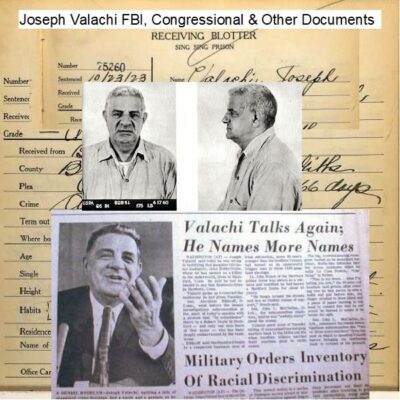
Joseph Valachi FBI Files – Congressional Hearings & Other Historical Material
$19.50 Add to Cart -
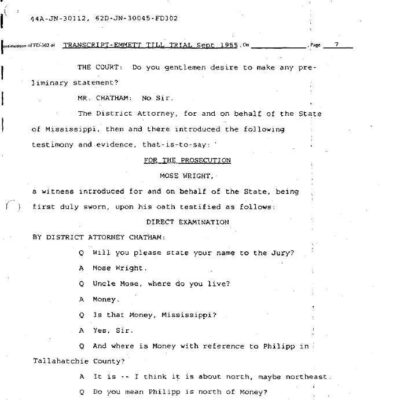
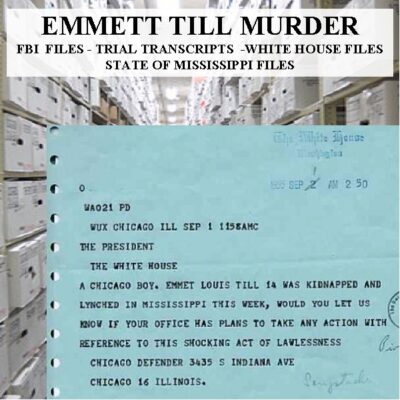
Emmett Till Murder: FBI, White House, Mississippi Files & News Articles
$19.50 Add to Cart -
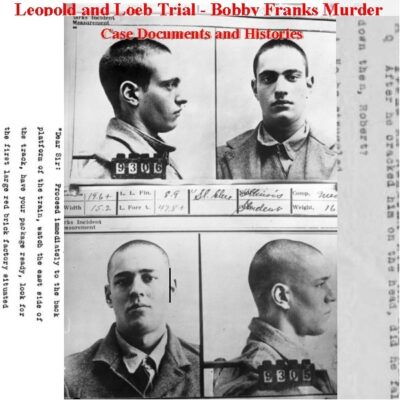
Leopold and Loeb Trial – Bobby Franks Murder Case Documents and Histories
$19.50 Add to Cart -
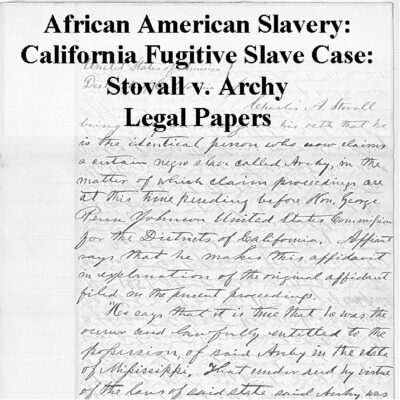
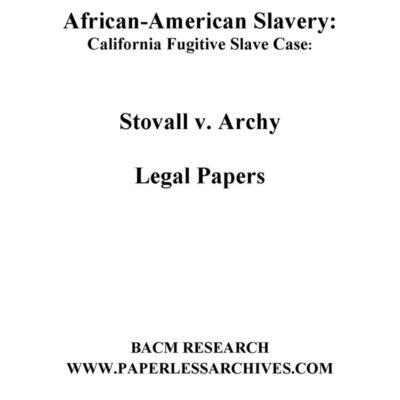
Legal Papers from the California Fugitive Slave Case: Stovall v. Archy
$4.99 Add to Cart